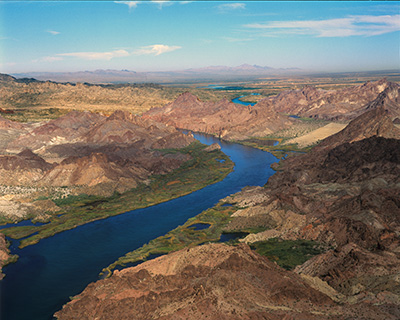| 2015 RiverWare User Group Meeting |
 |
| NCAR/UCAR Center Green Campus Auditorium |
Tuesday, February 3, 8am - 5pm
Wednesday, February 4, 8am – 12:30pm
|
 |
|
|
 |
 |
 |
|
| |
| Evaluating the Value of Information Provided by Airborne Snow Observatory Products in Support of Reclamation Snowmelt Management Using RiverWare Modeling |
| Todd Vandegrift - BOR Technical Service Center, Denver, CO |
NASA’s Jet Propulsion Laboratory (JPL) is developing remote sensing technologies for improved measurement and estimation of snow water equivalent (SWE), snow covered area (SCA), and snow surface albedo within the Airborne Snow Observatory (ASO) that could potentially result in improved runoff forecasting, in terms of total volumes, flow magnitudes, and timing. Reclamation’s snowmelt management and associated spring reservoir operations depend largely on runoff forecasting to make goals, set targets, and make decisions including reservoir release volumes and timing to make room for snowmelt runoff. In order to evaluate the anticipated increase in forecast skill due to the new ASO products with regard to the ability to operate their river and reservoir systems more efficiently and better meet goals and targets, Reclamation is using two RiverWare operational models to test forecast alternatives. Annual scale, daily timestep, operations models have been developed and adapted for the Gunnison River Basin, including the Aspinall Unit of Blue Mesa, Morrow Point, and Crystal Reservoirs, and the San Juan River Basin, including the major Navajo Reservoir.
These RiverWare models are being run for 12 individual water years (2001-2012) and focusing on operational look ahead and decision making while informed by synthetic runoff forecast series representing three unique forecast alternatives, including: 1) a base condition representing use of current snowpack monitoring (SNOTEL) and hydrologic model (SacSMA-SNOW17) supporting NWS CBRFC forecasts, 2) an alternative still reliant on current snowpack monitoring but replacing the current hydrology model with a more physically based alternative (DHSVM), and 3) an alternative that is same as alternative 2 but with current snowpack monitoring replaced by emulated spatially-distributed snowpack and albedo information from ASO. Evaluation variables may include reservoir spill volumes and target storages, the ability to meet both environmental flows and water user delivery goals, hydropower production, and other operational objectives. |
|
|
|
|